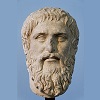12.10: Expansion of Christendom
- Page ID
- 12420
In the Middle Ages, the people of Western Europe did not think of Europe as a geographic and cultural area. Rather, they thought of Christendom, those peoples and nations of the world that embraced the Christian religion, as a community sharing common ideals and assumptions. We might compare it to the Muslim notion of Dar al-Islam (see Chapter Eight). And in the eleventh century, Christendom expanded. Not only had the peoples to the north and east embraced Christianity, but also Christian peoples and kingdoms in the Western Mediterranean expanded militarily at the expense of Islam. In Spain, the movement of the Christian kingdoms of northern Spain to expand their territory at the expense of Muslim al-Andalus would come to be known as the Reconquista, the reconquest. It was known as the re-conquest because there had been a Christian kingdom in Spain in the sixth and seventh centuries that had fallen to Muslim invaders in 711. Christians would thus have assumed that Spain, even though much of it might be Muslim ruled, was rightfully Christian. The effort by the Christian kingdoms of the Iberian Peninsula to dominate, conquer, and re-Christianize al-Andalus would become a key element in how Spanish Christians understood their identity both as Christians and Spaniards.
How did the Reconquista begin? From the Muslim conquest of Spain in 711 through the early eleventh century, al-Andalus was the dominant military power of the Iberian Peninsula, with Christian kingdoms confined to the marginal, mountainous regions of the peninsula’s north (see Chapter Eight). But in 1008, Abd al-Rahman (also known as Sanjul), the caliph’s chief adviser, sought to make himself caliph and replace the Umayyad dynasty with his own. The result was nearly three decades of civil war. The Cordoba Caliphate collapsed in 1031, fracturing into what we refer to as the taifa states, a set of small, politically weak states. These states were much weaker than the centralized Cordoba Caliphate and so were easy prey for potential conquerors from both the Christian north of the Iberian Peninsula and the Islamic Maghreb.
.png?revision=1)
The Christian kingdoms of Spain had several strengths that enabled them to expand at the expense of the taifa states. In the first place, the taifa states were not only politically weak, but they were also at odds with each other. In addition, the construction of stone castles in newly-conquered territories allow the Christian kings to secure their conquests. Moreover, the Christian kingdoms of Spain could draw on much of the rest of Western Europe for manpower. By the eleventh century, the knight who inherited a fief would usually be the oldest son of the fief’s lord. This arrangement meant that Western Europe had many knights who, as younger sons, had not inherited from their fathers (inheritance nearly always passed to males). These landless knights were looking either for employment or fiefs of their own. New conquests along the frontier of Muslim Spain thus gave them the perfect opportunity to seize their own lands. As a result, French knights flowed south in a steady stream across the Pyrenees.
In Southern Italy, a group of knights from the region of France known as Normandy (and who were thus called Normans) had fought in the employ of the Byzantine emperors against the Muslim rulers of North Africa and Sicily. They eventually broke with the Byzantine Emperors and created the Kingdom of Sicily, a kingdom comprised of Sicily and Southern Italy, the lands that they had seized from both the Byzantines and Sicilian Muslims, with the last Muslim territory in Sicily conquered in 1091. These knights too had come south to the Mediterranean in search of new lands.
The Christian kingdoms of both Spain and Sicily were relatively tolerant of their Muslim subjects. Although Muslims under Christian rule faced civil disabilities similar to the dhimmi status of Jews and Christians in Muslim-ruled lands, they had a broad array of rights and protections. Indeed, the Christian kings of Sicily often employed Muslim mercenaries in their military service.
These victories by Christian forces over Muslims would be of great interest to the popes, who were seeking to reform the Church and to find ways that knights could be made to serve Christian society.


